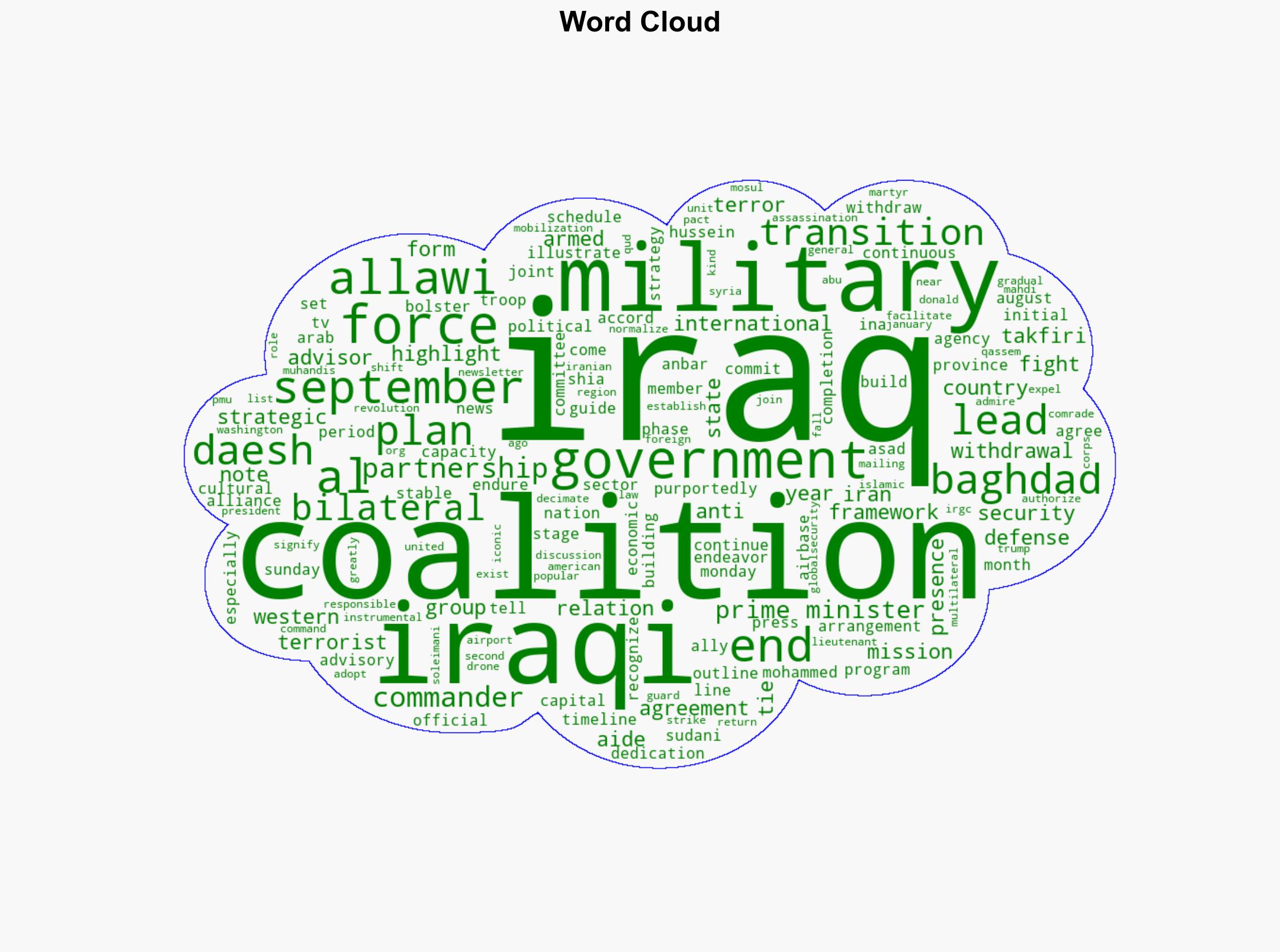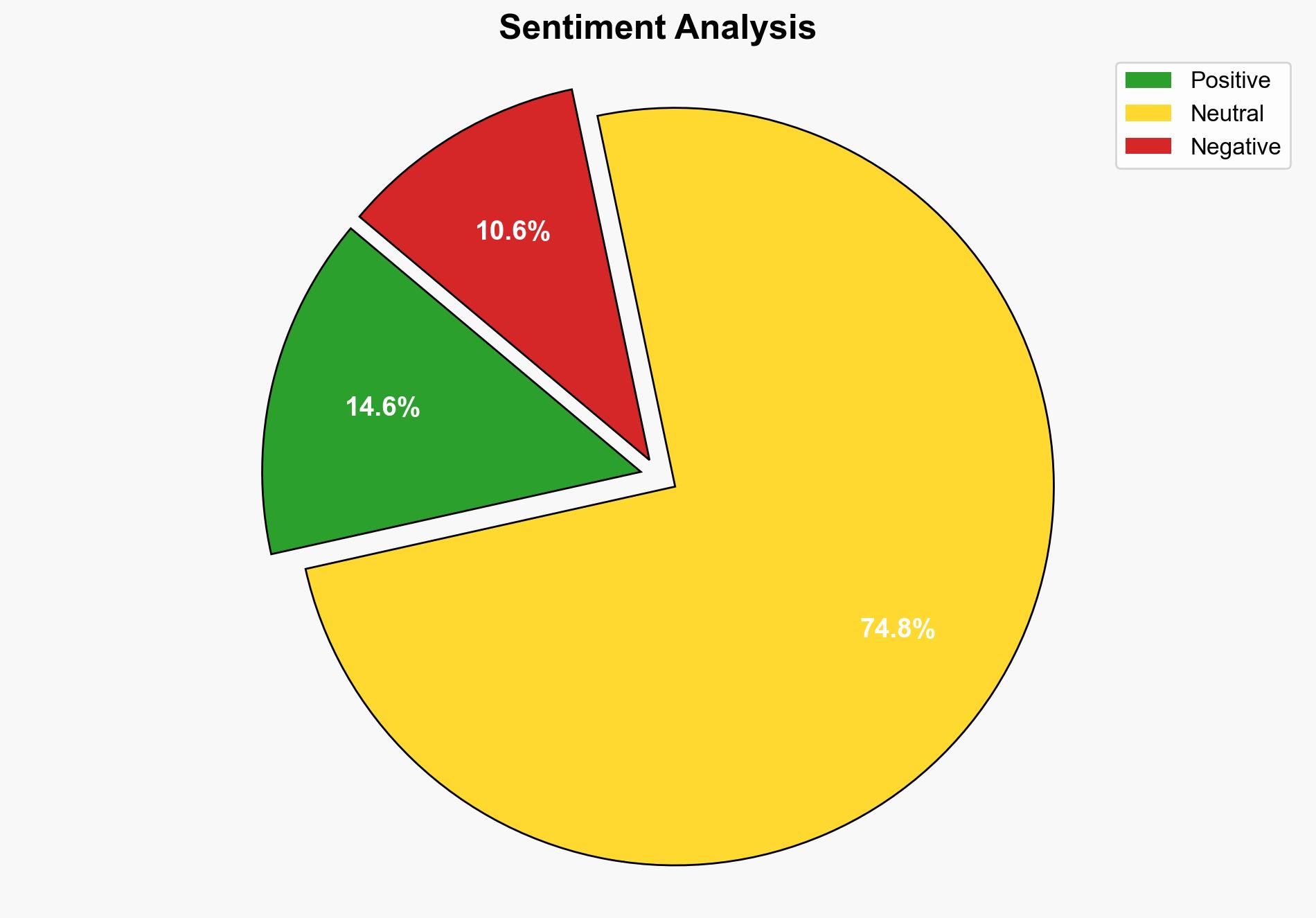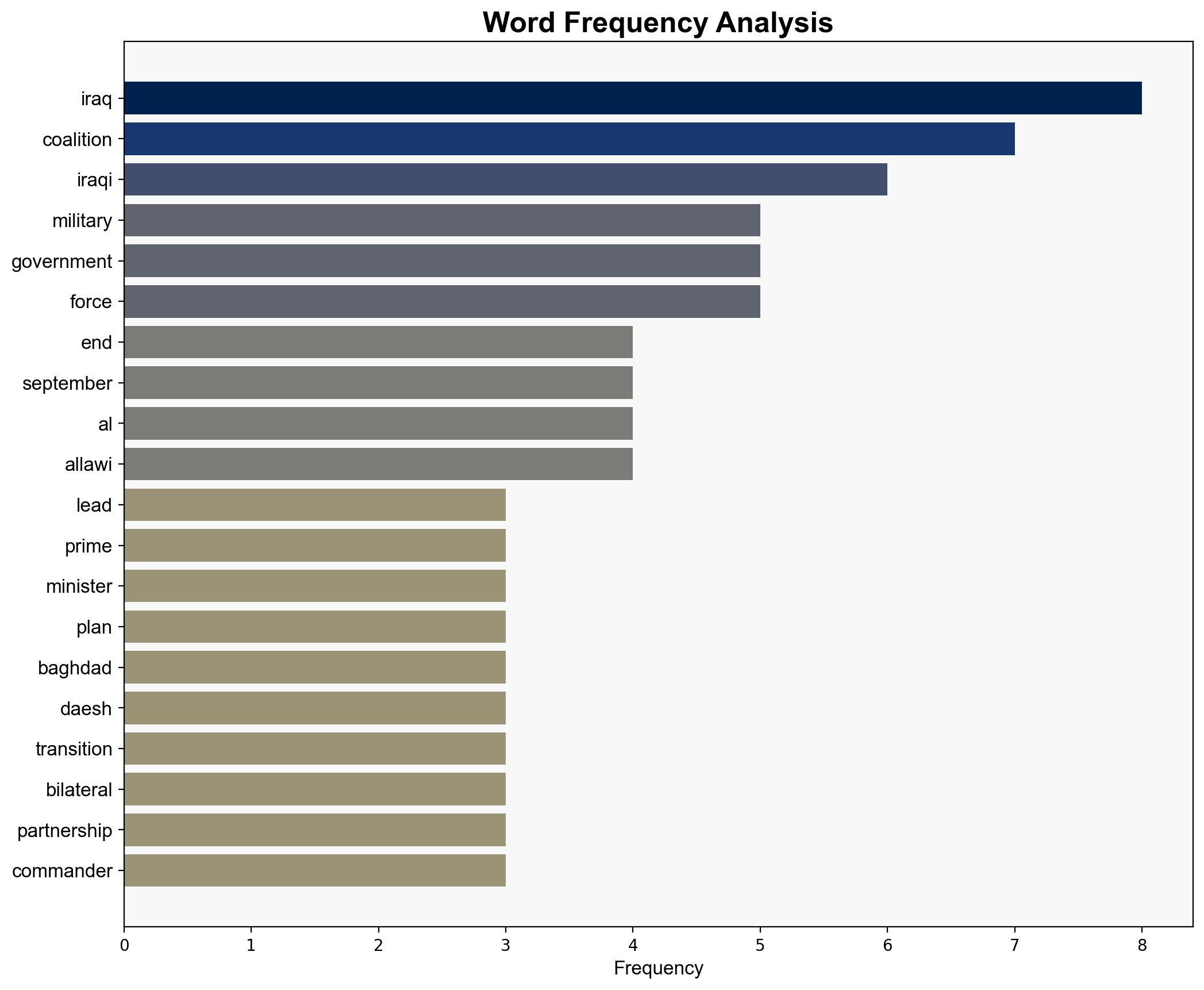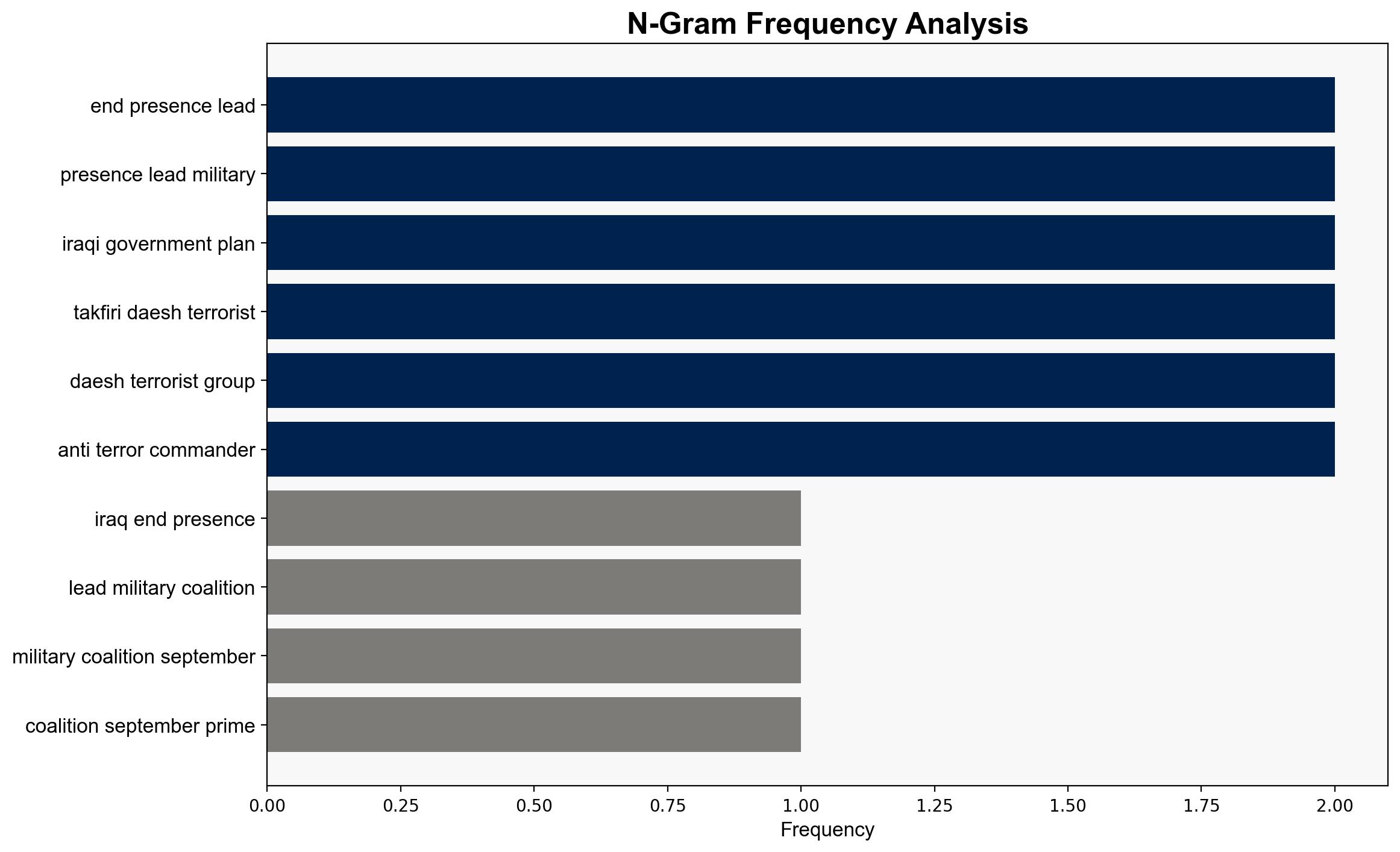Iraq to end presence of US-led military coalition by September Prime minister’s aide – Globalsecurity.org
Published on: 2025-08-19
Intelligence Report: Iraq to end presence of US-led military coalition by September
1. BLUF (Bottom Line Up Front)
Iraq’s decision to end the presence of the US-led military coalition by September is likely a strategic move to assert sovereignty and strengthen bilateral defense partnerships. The most supported hypothesis is that Iraq aims to transition to a more independent security framework while maintaining strategic alliances. Confidence level: Moderate. Recommended action: Monitor Iraq’s military and diplomatic engagements closely to assess shifts in regional power dynamics.
2. Competing Hypotheses
1. **Hypothesis A**: Iraq is ending the coalition presence primarily to assert national sovereignty and reduce foreign military influence, transitioning to bilateral defense partnerships.
2. **Hypothesis B**: The withdrawal is largely influenced by external pressure from regional actors like Iran, aiming to reduce US influence in Iraq.
Structured Analytic Technique: **Analysis of Competing Hypotheses (ACH) 2.0** was applied. Hypothesis A is better supported by Iraq’s stated goals to bolster its armed forces and establish bilateral defense arrangements, as well as historical context of seeking reduced foreign military presence. Hypothesis B is less supported due to lack of explicit evidence of direct external pressure influencing the decision.
3. Key Assumptions and Red Flags
– **Assumptions**: Iraq has the capability to independently manage its security without coalition support. The transition to bilateral partnerships will be smooth and effective.
– **Red Flags**: Potential underestimation of internal security challenges post-withdrawal. Lack of clarity on the specifics of new bilateral agreements.
– **Blind Spots**: Possible covert influence from regional actors not explicitly acknowledged in the intelligence.
4. Implications and Strategic Risks
– **Implications**: A successful transition could enhance Iraq’s regional standing and sovereignty. However, failure to manage security independently could lead to instability.
– **Strategic Risks**: Potential resurgence of terrorist activities if security gaps emerge. Strained relations with coalition countries if withdrawal is perceived as abrupt or uncooperative.
– **Cascading Threats**: Regional power shifts could embolden non-state actors, increasing threats to neighboring countries.
5. Recommendations and Outlook
- Engage in diplomatic dialogue with Iraq to understand the specifics of their new defense strategy and offer support where feasible.
- Monitor regional actors’ responses to the withdrawal to anticipate shifts in alliances.
- Scenario Projections:
- **Best Case**: Iraq successfully transitions to a stable, independent security framework, enhancing regional stability.
- **Worst Case**: Security vacuum leads to increased terrorist activities and regional instability.
- **Most Likely**: Gradual transition with initial challenges, but eventual stabilization through international cooperation.
6. Key Individuals and Entities
– Mohammed Shia al-Sudani
– Hussein Allawi
– Qassem Soleimani
– Abu Mahdi al-Muhandis
7. Thematic Tags
national security threats, cybersecurity, counter-terrorism, regional focus




